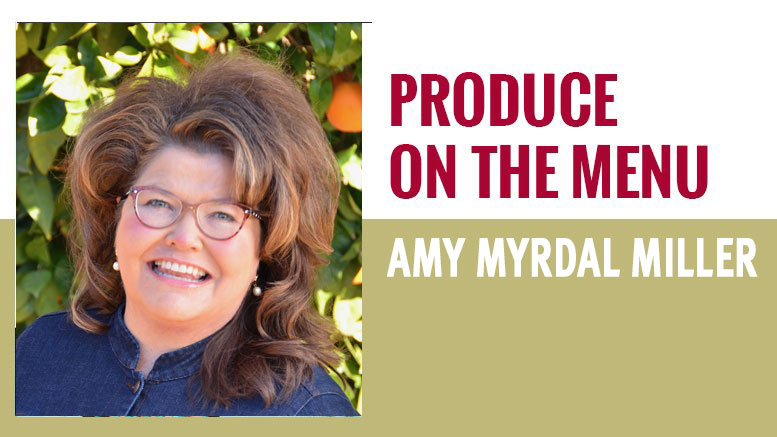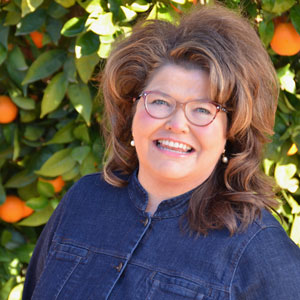Authenticity, Flavor and the Future of Produce on American Menus
January 9, 2024 | 5 min to read
Attending the 2023 Worlds of Flavor Conference revealed a deep focus on Asian heritage and innovative produce utilization. Chefs showcased unique techniques and flavors, such as Chef Sohui Kim’s use of pickled chiles in her tuna crudo, and Chef Sam Fore’s vibrant “sprinkle, sprinkle” of spices. Emphasizing umami, Chef Tod Kawachi created a savory panna cotta inspired by his heritage. Overall, the conference highlighted that while ingredients may be new to some, they are timeless in the culinary world.

I had the opportunity to attend The Culinary Institute of America’s (CIA) 2023 Worlds of Flavor Conference in November. While I used to be on staff at the CIA, I hadn’t attended Worlds of Flavor since 2013. I was eager to see how programming had evolved.
The conference theme — Authenticity, Flavor and the Future — seemed like a “something for everyone” theme, but there was intense focus in two areas of programming: guest chefs and speakers of Asian heritage and produce. Here are the produce-related themes and trends that caught my attention.
NOT-SO-SIMPLE SAUCES
Many guest chefs used produce in sauce preparations. A fine-dining Korean American chef from Brooklyn, Chef Sohui Kim, finished her tuna crudo with a gorgeous assortment of fresh and pickled fruits and vegetables with the liquid she’d used to pickle Fresno chiles.
Kim talked about how ingredients and techniques combine to demand higher prices for menu items and full utilization of every produce item helps maintain margins. Using the pickling liquid from Fresno chiles was just one example of this, a choice that also contributes flavor.
Her crudo preparation featured watermelon, cherry tomatoes, garlic, perilla leaves, sweet and hot chiles and lemon juice. But this listing of produce items overlooks the techniques she applied to nearly every item, including making seasoned tomato water (with tomatoes, bell peppers, shallots and lemon juice) to marinate the watermelon and cherry tomatoes, creating black garlic through fermentation, and making her own ponzu sauce with fresh yuzu and other ingredients.
A FINAL SPRINKLE, SPRINKLE
Chef Sam Fore, a Kentucky native of Sri Lankan descent who owns Tuk Tuk Snack Shop in Lexington, KY, finishes her fried chicken with a squeeze of lime plus a “sprinkle, sprinkle,” a magical, aromatic blend of sprinkling salt, lime zest, and curry leaves that she blends with her fingers to break down the leaves and infuse the salt with its essence. I was seated eight rows back from the stage when she was making this mixture. The more she rubbed the mixture with her fingers, the more alluring the aromas became.
Chef Rachel Haggstrom, the executive chef at JUSTIN Vineyards & Winery in Paso Robles, CA, uses the flesh of finger limes to finish her elegant crab salad, saying “the texture of the extruded pulp of this fruit mimics the texture of roe.” It pops in your mouth the way roe does offering a delightful burst of flavor.
She went on to comment about how many of their guests want vegan preparations, so the finger lime will play the role of caviar as a final “sprinkle, sprinkle” of flavor and texture in many vegan dishes.
THE POWER OF UMAMI
Many guest chefs talked about the power of umami to drive enjoyment of vegetable-based dishes. Chef Tod Kawachi, executive chef at Joseph Phelps Vineyard in St. Helena, CA, says, “Adding umami to vegetable dishes invites you to have another bite.”
He demonstrated Savory Kombu Panna Cotta with Kinpira Gobu and Golden Trout Roe, which honored his Chinese and Japanese roots, drawing ingredients and techniques from both cuisines. He talked about how his Japanese grandmother would make him Kinpira Gobu as a snack for him after school. It’s a combination of burdock root and carrots sauteed with canola and sesame oil and finished with soy sauce. His preparation also included mirin and sake. In addition to soy sauce providing umami, the kombu and katsuobushi (seaweed and fish flakes) in his ponzu preparation for finishing the dish also contributed to round, savory flavors in this dish.
COMFORT FOOD
My favorite guest chef of the conference was Chef Edward Lee of 610 Magnolia and Nami in Louisville, KY. His powerful storytelling ability and his warmth on stage drew in the audience as we watched him prepare Budae Jjigae (Korean Army Stew). This stew version of Bi Bim Bap was created after the Korean War with foods left behind by the American military, including Spam and American cheese.
Lee commented, “Comfort food is nostalgia food,” as he talked about how his dad would make this meal and explain to him how comforting it was to eat this dish as a child after years of being hungry during the war.
“Ingredients and flavors may be new to you, but not new to the world.”
— Breana Killeen, culinary dietitian, farmer and founder of the Vermont Culinary Creative
Lee used thinly sliced pork shoulder in place of the Spam, but he kept the American cheese, which was typically placed on top of the steaming stew to melt into the broth. Lee made a grilled cheese sandwich to top the dish.
What about produce, you ask? Shiitake and enoki mushrooms as well as garlic, onions, green cabbage, scallions and radishes are all included.
WHAT DOES ‘NEW’ MEAN?
The most powerful statement of the conference came from a colleague of mine, Breana Killeen, a culinary dietitian, farmer and founder of the Vermont Culinary Creative. “Ingredients and flavors may be new to you, but not new to the world.”
Exploring the world of foods and flavors creates endless opportunities for expanding our views of how produce can play a role on American menus.

Amy Myrdal Miller, MS, RDN, FAND is a farmer’s daughter from North Dakota, award-winning dietitian, culinary nutrition expert, and founder and president of Farmer’s Daughter Consulting, Inc. You can learn more about her business at www.farmersdaughterconsulting.com and follow her insights on food and flavor on social media @alaheartamy.
19 of 32 article in Produce Business January 2024

